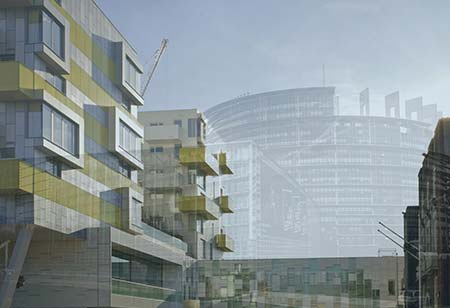Thank you for Subscribing to Construction Business Review Weekly Brief

Regulatory Requirements for Building Sealing in Europe
European building envelopes are regulated by EU directives, national codes, and regional regulations, requiring contractors to follow best practices, stay updated on sustainability trends, and enhance efficiency.
Building envelopes are integral to a structure's overall performance. Effective sealing is imperative to achieve optimal energy efficiency, enhance occupant comfort, and ensure the long-term durability of buildings. Within Europe, a nuanced framework of regulations and industry best practices governs the selection and application of sealing solutions.
Regulatory requirements and compliance in building sealing across Europe are shaped by a multifaceted framework of EU directives, national building codes, and regional regulations. EU Directives, such as the Energy Performance of Buildings Directive (EPBD) and the Construction Products Regulation (CPR), play pivotal roles in setting standards for energy efficiency and the safety of construction products, respectively. These directives mandate minimum energy performance standards for buildings and require sealing materials to meet CPR harmonised standards. Member states then translate these directives into national building codes that detail specific requirements for air leakage and building envelope thermal performance, often referencing national or regional standards for sealing materials and installation practices. Moreover, regional regulations within member states may further tailor requirements to local climatic conditions or building types.
To navigate this complex regulatory landscape effectively, contractors rely on crucial resources. These include official websites of national building authorities for accessing codes and guidance documents, the European Organisation for Standardisation (CEN) for harmonised construction product standards under the CPR, and national standardisation bodies which publish additional standards and technical specifications. These resources offer comprehensive guidance on selecting appropriate sealing materials and ensuring compliance with relevant standards.
Adhering to best practices is crucial for contractors in achieving effective sealing solutions. This involves thoroughly understanding project requirements, carefully selecting materials that meet standards and application needs, meticulous surface preparation, adherence to proper application techniques, rigorous quality control measures, and thorough documentation. Furthermore, staying updated on sustainability trends, advancements in sealing technologies, and integrating sealing details into Building Information Modeling (BIM) can enhance project efficiency and environmental performance.
By comprehensively understanding the regulatory landscape, adhering rigorously to industry best practices, and remaining abreast of cutting-edge developments in sealing materials and methodologies, contractors can guarantee that their projects achieve the utmost standards in energy efficiency, occupant well-being, and structural durability. As Europe maintains its steadfast focus on sustainability within the construction sector, pioneering sealing solutions are poised to assume an increasingly pivotal role in shaping energy-efficient building design and implementation trajectory.








